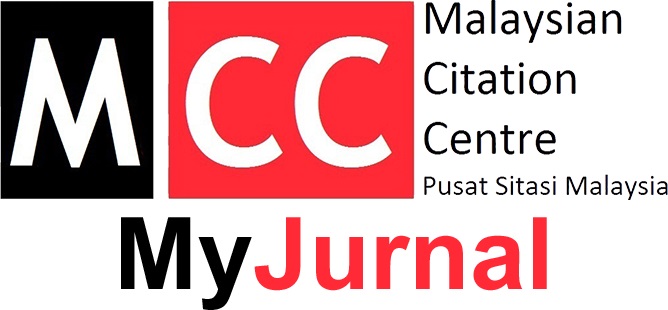The Use of Epoxidised Natural Rubber Latex for Developing Coloured Adhesives
Keywords:
epoxidised natural rubber latex, water-based adhesive, water-based paint, dual function adhesiveAbstract
Adhesives serve many functions in daily life, starting from sticking envelopes to rejoining broken materials. Adhesives are usually developed for a specific purpose and the performances can vary according to their specific end-use. Most of the commercially available adhesives comprised non-renewable or petroleum derived raw materials. Thus, in order to mitigate negative impact of using non-renewable material as the raw material for adhesives, a new type of adhesive containing epoxidised natural rubber (NR) latex is developed. Epoxidised NR latex adhesive was initially prepared and pigment was subsequently added to produce desired colours of the adhesive. Hence, the newly developed adhesive can serve as adhesive and also as paint for art. The adhesives were characterised, and the results indicated that they were free from heavy metal contents and volatile organic compounds (VOCs). The adhesives exhibited comparable odour concentration to commercial synthetic-based adhesive. In terms of toxicity level, the adhesive developed exhibited low acute oral toxicity. Peel adhesion test of A4 and drawing papers on stainless steel and glass substrates, opacity and glossiness were also investigated in the present study. This coloured adhesive is deemed to support the STEM (science, technology, engineering and mathematics) learning by indirectly imparting polymer science and technology in art education and further promotes creative learning among school children. The adhesive is also derived from renewable material rendering it more environmentally friendly.
References
Alua, P. M. (2012). Opacity optimization of waterborne paints. Retrieved from https://fenix.tecnico.ulisboa.pt/downloadFile/395144321407/resumo.pdf
Butler, G.L. (1989). Natural rubber adhesives. In S. Donatas (Ed.), Handbook of pressure sensitive adhesive technology (pp. 260 – 294). New York: Van Nostrand Reinhold.
Gazeley, K. F. ( 1981). Natural rubber latex in pressure sensitive adhesives. NR Technology, 12(4) 85 – 92.
Guo, H., Murray, F. & Wilkinson, S. (2000). Evaluation of Total Volatile Organic Compound Emissions from Adhesives based on Chamber Tests. Journal of Air & Waste Management Association. 50(2), 199-206.
Imran, K. & Poh, B. T. (2011). Natural rubber-based pressure sensitive adhesives : A review. Journal of Polymers and the Environment, 19, 793-811.
Kim, S., Kim, J.-A., An, J.-Y, Kim, H.-J. & Moon, S.-J. (2006). Development of a test method using a VOC analyzer to measure VOC emission from adhesives for building materials. Journal of Adhesion Science & Technology, 20(15), 1783-1799.
Loo, C.T. (1989). Adhesive Compositions. MY106610.
Maarof, Z.A. (1998). Evaluation of ENR as a footwear adhesive. Proceeding Int. Rubber Technology Conference., 441-452.
Malaysian Standard. (2012). MS 249-2012: Eco-labelling Criteria for Adhesive. MPI Architectural Standards (2019) Retrieved from http://mpi.arcomone.com/DT201arcom/Manuals_ASM/Misc/standards.asp
Organisation for Economic Cooperation and Development (OECD) 2002, Test No. 423: Acute Oral Toxicity – Acute Toxic Class Method, OECD Guidelines for Testing of Chemicals, Section 4, OECD Publishing, Paris
Rohani, A. B. (2009). Water based adhesives using modified natural rubber latices. Malaysian Rubber Technology Developments 9(1) 15-19.
Rohani, A.B., Asrul, M., Norhanifah, M.Y. & Abdul Fateh Kamil, K. (2018) Colouring Adhesive Trade Secret TS 2018-06.
Rohani, A.B., Manroshan, S. & Devaraj, V. (2014). Evaluation of epoxidized natural rubber latex – based pressure sensitive adhesives containing hydrocarbon and rosin ester tackifier dispersions on adhesives properties. Advanced Materials Research – Materials, Industrial and Manufacturing Engineering Research Advances, 1.1, 845, 189 – 193.
Thongnuanchan, B., Nokkaew, K., Kaesaman, A. & Nakason, C. (2007). Epoxidized natural rubber-bonded para rubber wood particleboard. Polymer Engineering and Science, 47, 421-428.
United Nations Economic Commission for Europe (UNECE). Globally Harmonised System of Classification and Labelling of Chemicals (GHS), 2017. Part 3: Health Hazards, Chapter 3.1: Acute Toxicity
Volatile Organic Compounds by Gas Chromatography/Mass Spectrometry (GC/MS), (1996, December) U. S Environmental Protection Agency, Office of Solid Waste, SW-846 Method 8260B, revision 2.
Wong, S.G. & Chen, S. F. (1988). Evaluation of epoxidized natural rubber latices for adhesives. Proc. International Rubber Technology Conference., 453-462.
Downloads
Published
Issue
Section
License
Copyright (c) 2020 Journal of Academia

This work is licensed under a Creative Commons Attribution-NonCommercial-NoDerivatives 4.0 International License.












